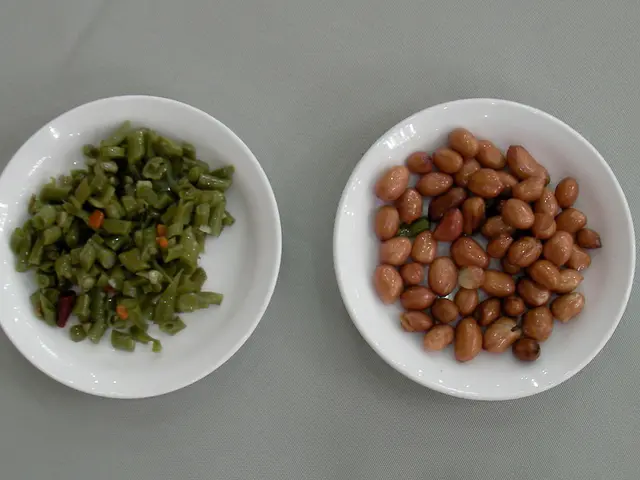Eating out at restaurants might not be significantly healthier compared to fast food, according to a recent study.
A new study has revealed that dining out, whether fast food or restaurant meals, often results in higher calorie, fat, and sodium intake compared to home-cooked meals. The study, which analyzed the dietary habits of over 18,000 U.S. adults, found that the lines between fast food and restaurant dining blur quickly when it comes to calories, fat, and sodium.
Calorie, Fat, and Sodium Comparison
Fast food meals are usually calorie-dense and high in fat and sodium to enhance flavor and shelf stability. For example, fast food items often exceed recommended portion sizes and contain added fats and salts that contribute to excess intake.
Restaurant meals, especially from local or sit-down venues, can sometimes offer better nutritional quality, such as lean proteins (e.g., chicken, steak) and vegetable sides. However, portions can be large and calorie counts still high. Controlled portions (like ordering kids’ meals) and selecting vegetables over fries can help lower calorie and fat intake when dining out.
Home-cooked meals allow control over ingredients, portion size, cooking methods, and seasoning, making it easier to limit calories, fat, and sodium. Meal kits that focus on healthy options, including low-carb and plant-based choices, are a convenient alternative supporting better nutritional profiles at home.
Are Restaurant Meals Nutritionally Superior to Fast Food?
Yes, often restaurant meals, particularly when emphasizing lean proteins and vegetables rather than fried or highly processed items, are nutritionally superior to fast food, which tends to be higher in unhealthy fats, calories, and sodium. However, many restaurant meals still contain more calories and salt than home cooking.
Potential Health Implications of Eating Out Regularly
Regular consumption of fast food and many restaurant meals can contribute to excessive calorie intake, leading to overweight, obesity, and associated risks such as cardiovascular disease, diabetes, and hypertension because of the high fat, sugar, and sodium content. Frequent dining out makes it more difficult to control nutrient intake and portion sizes, increasing the risk of chronic diseases.
Choosing healthier restaurant options (lean proteins, vegetables, smaller portions) and reducing frequency of eating out can mitigate these risks.
Addressing the Issue of Restaurant Food's Nutritional Misleading Nature
Mandatory calorie labeling, clearer information on cholesterol, sodium, and saturated fat content, public education, and incentives for restaurants to create genuinely healthful options are needed to address the issue of restaurant food's nutritional misleading nature.
The extra intake of cholesterol, about 58 milligrams per day, accounts for 20% of the recommended upper bound of total cholesterol intake of 300 milligrams per day. Cooking at home reintroduces mindfulness into eating, fosters awareness, reduces impulse decisions, and may strengthen the relationship with food.
Home-cooked meals have lower sodium and sugar levels compared to processed or restaurant-prepared meals. Simple home-cooked meals are nutritionally superior to most restaurant offerings.
The study did not factor in glycaemic index, food additives, or how meals impact blood sugar levels. The lack of awareness about the nutritional content of restaurant meals may be the real issue contributing to overconsumption.
The study did not examine the long-term health effects of different eating environments, such as stress levels, food diversity, or timing of meals. The University of Illinois conducted a study that found eating out, whether fast food or an upscale bistro, leads to an average of 200 more calories consumed per day compared to home-cooked meals.
With fast food, diners have come to expect nutritional pitfalls and might adjust accordingly, but at a restaurant, there is a tendency to trust the menu and assume that a more expensive meal must be healthier. Restaurant meals might include more micronutrients, but they often come with a side of excess cholesterol and sodium levels that rival or exceed fast food.
Lead researcher Ruopeng An stated that people who ate at full-service restaurants consumed significantly more cholesterol per day than people who ate at home. Public health messaging needs to address eating out in general, not just fast food. In many cases, restaurant meals were worse than fast food in terms of saturated fats, sodium, and cholesterol.
The study's data was based on self-reported food diaries, which can be unreliable in nutrition science. However, the study's findings are consistent with other research on the subject, highlighting the need for improved nutritional transparency and education in the restaurant industry.
In summary, home-cooked meals generally offer the best nutritional control and can be made healthier using meal kits designed for balanced eating. Restaurants can be better than fast food but still require mindful choices to avoid excess calories, fat, and sodium. Eating out regularly without such mindfulness can negatively impact health.
CBD oil, known for its potential health benefits, could be a beneficial addition to home-cooked meals, as it may help with stress reduction and inflammation, which are factors that can impact overall health and wellness.
Regarding medical-conditions, such as heart disease, diabetes, and hypertension, maintaining a balanced diet through home-prepared meals or meal kits with a focus on nutrition could help manage these conditions more effectively. This could lead to improvements in fitness-and-exercise performance and overall health due to a better nutritional profile.
To ensure proper nutritional needs are met when dining out, one may consider researching restaurant nutritional information, reading menus carefully, and making informed choices, such as selecting dishes that feature lean proteins, vegetables, and whole grains, while limiting excess fats, sugars, and sodium. Additionally, portion control is essential to maintain a balanced diet when eating out.







